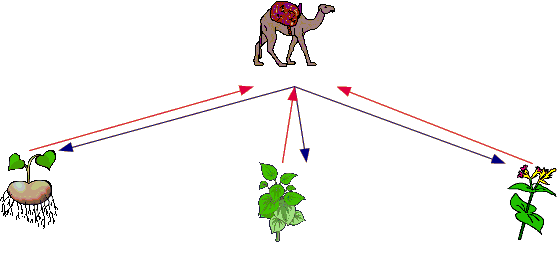

I read that the camel’s hump serves as a sort of portable pantry. Here most of its food reserve is stored in the form of fat. If the camel is required to draw nourishment from its stored-up food supply for too long a time, the skin of the hump, instead of standing up, falls over and hangs like an empty bag on the side of the dorsal ridge. In ancient times, as today, loads were placed on the humps of camels. Although folklore has it that the camel stores water in its hump, this is not the case. It is generally thought that the camel can get along without water for a prolonged period because of its ability to retain much of the water that it drinks. A contributory factor is the design of the nose, which enables the animal to extract water vapor when exhaling. The camel can tolerate a loss of water of 25 percent of its weight, in contrast to 12 percent for humans. It does not lose moisture by perspiration as rapidly as do other creatures, because its body temperature can vary 6° C. (11° F.) without marked effects. Its blood is unique in that loss of fluid is minimal even when water is in short supply for several days. It can also replace lost body weight by drinking as much as 135 L (35 gal) in ten minutes.
Ensuing to examining your article I came to understand that how to make systems while playing movement preoccupations. Your given tips will help me in accomplish missions of trusted online casino nz to have more bonus and enjoy with friends.